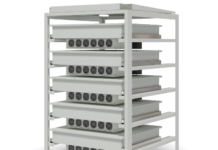
With the development of new applications and the focus of stakeholders to position the connectivity as an embedded component within Internet of Things (IoT) solutions, connectivity revenue share of the total IoT market is expected to decline. As a result, telcos need to capture a large proportion of the revenue potential associated with IoT deployments, says leading data and analytics company GlobalData.
The company’s report, ‘IoT Monetization‘, states that Telcos traditionally have a strong presence in the connectivity layer though the strength of their offerings declines when moving up the IoT value chain.
Marcelo Kawanami, Technology Research Manager at GlobalData says: “Operators are focused on finding ways to increase their role within the IoT ecosystem space, by climbing up the IoT value chain and capture a large proportion of the revenue potential associated with IoT deployments.”
“Operators can go beyond just providing the connection, including managed IoT services, enhanced security capabilities, and analytics services. By offering horizontal solutions such as platforms for developers, as well as cloud and analytics solutions geared towards IoT projects, telcos can achieve scale by acting across different sectors.”
A number of operators such as Verizon US, KPN in the Netherlands and MTS in Russia have launched platform solutions geared towards IoT implementations.
While these platforms begin with cellular data connectivity as the ‘table stakes’ requirement, the most advanced operators provide a host of features and services designed to help enterprises build use cases and demonstrate return on investment (ROI) to support IoT investment, as well as IoT deployment and management services.
However, the market for IoT ‘platforms’ is inherently confusing as there are hundreds of companies claiming to have some kind of IoT platform.
Kawanami adds: “From a technology perspective one company’s platform can vary significantly from another company’s platform based on the elements covered. For example, a variety of platforms are primarily hardware-based, while others manage data connectivity only. Also, a large number of platforms focus primarily on application enablement.”
According to GlobalData’s report, to truly establish a role as a ‘trusted partner’ in IoT, cellular operators should support deployments over multiple networks, even if those networks are not owned by the operator, and in some cases, non-cellular alternatives.
Kawanami concludes: “Cellular IoT operator platforms have never been more important. With the maturity and increasingly widespread deployment of Narrowband IoT (NB-IoT) and Long Term Evolution for Machines (LTE-M), operators have the ability to offer compelling new deployment options for customers.
“They need to find ways to increase their role within the IoT ecosystem space by proactively identifying use cases and providing evidence of their success. The more operators can showcase meaningful ROI, the better traction they are likely to establish.”


















